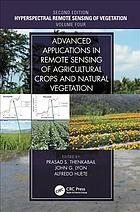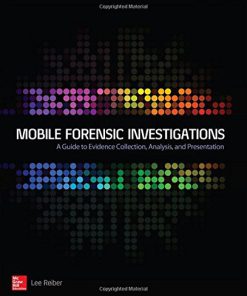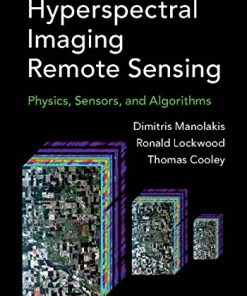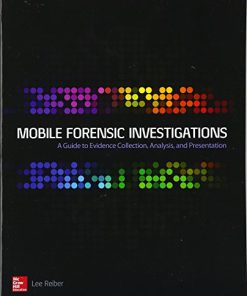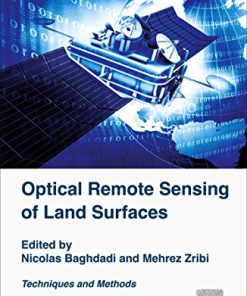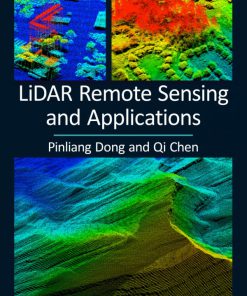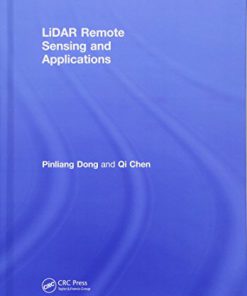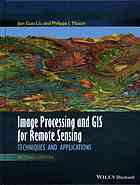Remote sensing technology in forensic investigations geophysical techniques to locate clandestine graves and hidden evidence 1st Edition by Clark Davenport 1351737500 9781351737500
$50.00 Original price was: $50.00.$25.00Current price is: $25.00.
Remote sensing technology in forensic investigations : geophysical techniques to locate clandestine graves and hidden evidence 1st Edition by G. Clark Davenport – Ebook PDF Instant Download/DeliveryISBN: 1351737500, 9781351737500
Full download Remote sensing technology in forensic investigations : geophysical techniques to locate clandestine graves and hidden evidence 1st Edition after payment.
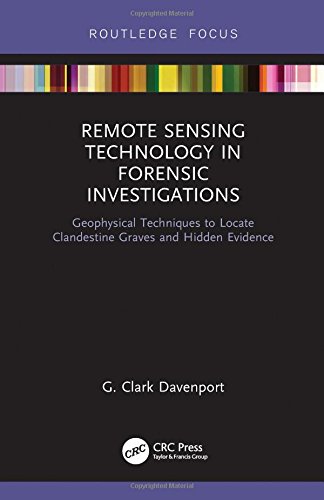
Product details:
ISBN-10 : 1351737500
ISBN-13 : 9781351737500
Author: G. Clark Davenport
Remote Sensing Technology in Forensic Investigations provides a basic understanding of concepts involved in the use of basic geophysical surveying, metal detectors, magnetics, electromagnetics and ground penetrating radar in police and forensic investigations. Such technology can be vital in locating clandestine, buried evidence which is often concealed in the subsurface underground. Crime scene investigation and evidence collection entails locating, identifying, collecting, and cataloging. Such physical evidence searches are time consuming and can often lead to searches that require excavations, which in itself that can destroy evidence. The noninvasive, nondestructive methods outlined in this book can both reduce the time spent on searches and excavations, thereby increasing the probability of locating vital physical evidence. As such, the application of remote sensing methods has gained increased acceptance, and seen increased usage, by investigators. Remote sensing methods are based on making indirect measurements of the surface of and within the earth. The resulting measurement information can be presented in either an imaging format— such as in aerial photography—or a non-imaging format, such as in a profile or contour map. These measurements can be interpreted to identify and characterize contrasts due to differences in physical and natural properties of the materials being studied. This can include physical evidence, remains, and clandestine graves. This book will serve as a handy introductory primer to the technology, techniques, and application of such techniques. Throughout, numerous references and additional resources are provided for those investigators, forensic anthropology, and police professionals who want further information on the technology’s usage for investigative purposes.
Remote sensing technology in forensic investigations : geophysical techniques to locate clandestine graves and hidden evidence 1st Table of contents:
1 Introduction
1.1 Historical Background
1.2 General Methodology
1.3 Need for High-Resolution Geophysical Capabilities
1.4 Site Survey Grid
2 Overview of Modern Geophysical Methods
2.1 Passive Geophysical Methods
2.1.1 Magnetics
2.1.2 Self-Potential
2.1.3 Gravity
2.1.4 Thermal Imaging
2.2 Active Geophysical Methods
2.2.1 Electromagnetics
2.2.2 Ground-Penetrating Radar
2.2.3 Electrical Resistivity
2.2.4 Acoustic (Seismic and Sonar)
3 Presurvey Planning and Postsurvey Reporting Requirements
3.1 Overall Statement of Objectives
3.2 Formulation of the Survey Plan: Questionnaire
3.3 Presurvey Site Evaluation
3.4 Equipment
3.5 Personnel
3.6 Reporting
4 Magnetic Surveying
4.1 Introduction
4.2 Limitations
4.3 Instrumentation
4.3.1 Total Field Magnetometers
4.3.2 Gradient Magnetometers
4.4 Field Procedures
4.5 Special Considerations
4.6 Documentation
4.7 Data Reduction
4.8 Data Interpretation
4.9 Data Presentation
4.10 Summary
5 Electromagnetic Surveying
5.1 Introduction
5.2 Limitations
5.3 Instrumentation
5.4 Field Procedures
5.5 Special Considerations
5.6 Documentation
5.7 Data Reduction
5.8 Data Interpretation
5.9 Data Presentation
5.10 Summary
6 Ground-Penetrating Radar Surveying
6.1 Introduction
6.2 Limitations
6.3 Instrumentation
6.4 Field Procedures
6.5 Special Considerations
6.6 Documentation
6.7 Data Reduction
6.8 Data Interpretation
6.9 Data Presentation
6.10 Summary
6.11 Words for a Warrant to Utilize GPR
6.11.1 Advantages
6.11.2 Disadvantages
6.11.3 Precedents
7 Metal Detector Surveying
7.1 Introduction
7.2 Limitations
7.3 Instrumentation
7.4 Field Procedures
7.5 Special Considerations
7.6 Summary
8 Infrared
8.1 Introduction
8.2 Limitations
8.3 Instrumentation
8.4 Documentation
8.5 Data Processing
8.6 False-Color Infrared
8.7 Summary
9 Marine Geophysical Methods
9.1 Acoustic Methods
9.2 Magnetic Methods
9.3 Ground-Penetrating Radar
9.4 Special Considerations
10 Airborne Geophysical Methods
11 Quality Control
11.1 Records
11.1.1 Field Activity Records
11.1.2 Equipment Use Log
11.2 Original Data Sets
11.3 Data Storage
12 Concluding Remarks
People also search for Remote sensing technology in forensic investigations : geophysical techniques to locate clandestine graves and hidden evidence 1st:
technology forensic scientists use
remote sensing technology facts
remote sensing technologist
remote forensic investigator jobs
remote sensing forensics
Tags: Remote sensing, technology, forensic investigations, geophysical techniques, clandestine graves, hidden evidence, Clark Davenport
You may also like…
Biology and other natural sciences - Plants: Agriculture and Forestry
Computers - Networking
Arts - Photography
Computers - Programming
Optical Remote Sensing of Land Surface. Techniques and Methods 1st Edition Nicolas Baghdadi
Poetry - American Poetry
Robert Graves and the classical tradition 1st Edition A. G. G. Gibson
Engineering
Image processing and GIS for remote sensing : techniques and applications Second Edition Liu




